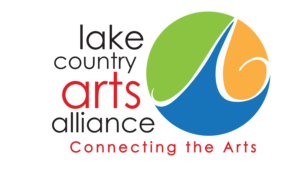Flannery O’Connor and the Art of Home
Irene Burgess, Lake Country Arts Alliance
“I am always having it pointed out to me that life in Georgia is not at all the way I picture it, that escaped criminals do not roam the roads exterminating families, nor Bible salesmen prowl about looking for girls with wooden legs.” Flannery O’Connor, “Some Aspects of the Grotesque in Southern Fiction”
In 1950, Flannery O’Connor, an aspiring writer in her mid-20s, came back home to Milledgeville for Christmas from her literary life in Connecticut. Very ill with what would turn out to be lupus, she stayed until her death in 1964.
O’Connor turned her experience and life in Milledgeville into art and philosophy in short stories, novels, letters, and essays that are appreciated around the world to this day. In the thirteen years of her life that she spent at her mother’s dairy farm on Hwy. 441, she would craft stories that were clearly of middle Georgia but were also universal in their appeal.
Her characters, like Mrs. Turpin, General Sash, and old man Fortune, are always flawed, often unlikeable, but still recognizable, even today, both in ourselves and our communities. They struggle with who they are and what they have become. The richness of the rural and small-town countryside they find themselves in becomes a testing ground for their lives. Often they are found wanting, but they are always human.
Our unique landscape itself becomes part of the stories like in the end of her short story “A Temple of the Holy Ghost,” where she describes the setting sun as “a huge red ball like an elevated Host drenched in blood and when it sank out of sight, it left a line in the sky like a red clay road hanging over the trees.” Tonight, as you’re finishing up the dinner dishes, look out the window and appreciate the beauty of that red clay road hanging over the trees that signals the end of the day. The everyday art of our lives is what she tried to capture.
O’Connor’s stories can often seem “grotesque,” much as the harmless ant can seem like a monster when observed under a magnifying glass. Her level of observation, leavened with a sense of absurdity and a religious mindset, comes in so close that these stories written almost 70 years ago still are fresh and relevant.
In a letter to her friend Cecil Dawkins, in 1957, O’Connor writes about the myth that writers need to leave home to be successful. She knew she was immersed, for good and for bad, in Central Georgia, and pretending that it wasn’t part of her artistic vision was a sham. Ultimately, she states, “The best of my writing has been done here.”
If you’d like to get a sense of what O’Connor tried to capture, a good place to start is her home, Andalusia, run by Georgia College as an interpretive museum capturing the life of the house during the time she lived there (https://www.gcsu.edu/andalusia/tours-andalusia). Even with Covid, tours with masks and limited participants are available Tuesday-Saturday, 10 AM-4 PM, and Sunday, 2-4 PM.
In addition, Georgia Public Broadcasting will air a documentary on O’Connor on March 28, at 1:00 PM, as part of their American Masters series. “Flannery: The Storied Life of the Writer from Georgia,” examines O’Connor’s life and legacy with significant footage from Milledgeville and Savannah.
The Lake Country Arts Alliance (http://lakecountryarts.org/) can keep you up to date on everything arts-related in our area. The breadth and depth of what’s here is truly astounding. Flannery O’Connor’s only one piece of the Lake Country arts and humanities story.
Finally, you just might like to read her stories yourself. In honor of her birthday on March 25, you can meet the escaped criminal or the Bible salesman mentioned at the start if you crack open “A Good Man Is Hard To Find” or “Good Country People.” Andalusia Institute hosts a monthly virtual reading group with the support of the Georgia Writers Museum and Allied Arts of Milledgeville; check out videos of the group on their Facebook page (facebook.com/andalusiainstitutegc) or on their website (andalusiainstitute.org).
Just don’t be surprised when you meet yourself, your neighbors, or your neighborhood in her pages.
